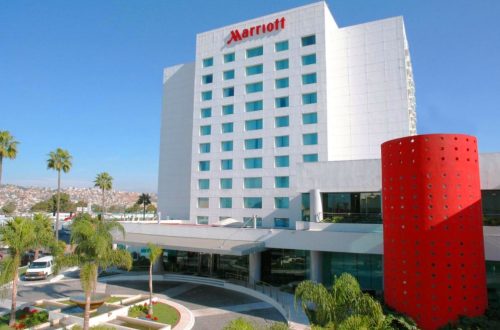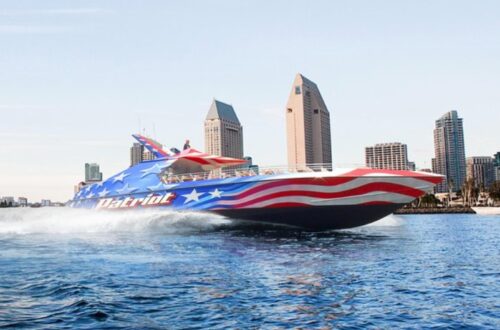History of Tijuana
With a population of more than 1.8 million, Tijuana is the largest city on the Baja California Peninsula and one of the most culturally vibrant metropolises of Mexico. This sprawling city, steeped in rich history and cultural diversity, is far more than its stereotyped image as a hub of vice and a haven for tourists.
The Early Days (pre-1500s)
The history of Tijuana extends far beyond the arrival of Europeans in the Americas. Indigenous peoples known as the Kumeyaay, who occupied regions extending from what is now Southern California to Baja California, were the earliest known inhabitants. Their lives, deeply connected to nature, were characterized by a nomadic hunter-gatherer lifestyle.
The Spanish Arrival (1500s-1821)
The arrival of the Spanish in the 16th century marked a significant shift. Explorer Juan Rodríguez Cabrillo, commissioned by the Spanish crown, is credited with being the first European to navigate the coast of present-day California. Over the next three centuries, the Spanish exerted control over the region, with the Kumeyaay suffering from diseases brought by the Europeans and the heavy impacts of colonization.
Mexican Independence and Border Establishment (1821-1889)
Following Mexico’s independence from Spain in 1821, the area that is now Tijuana became part of Mexico. The Mexican-American War (1846-1848) and the Treaty of Guadalupe Hidalgo, which ended the war, saw significant territorial changes, with Mexico ceding a substantial amount of land to the United States. Yet, it wasn’t until the Gadsden Purchase of 1853 that the border solidified, placing Tijuana just south of the new U.S.-Mexico boundary.
Despite these geopolitical changes, Tijuana remained a relatively minor player until the late 19th century. The discovery of gold in Baja California in 1880 ushered in a new era, attracting prospectors from around the world. In 1889, Tijuana officially gained city status.
The Sin City Era (1900s-1930s)
The early 20th century saw Tijuana evolve into a haven for vice during the American Prohibition Era (1920-1933). Its proximity to California, where alcohol was banned, fueled an influx of Americans in search of entertainment and liquor. Consequently, Tijuana developed a thriving nightlife scene with bars, casinos, and racetracks. The city’s reputation as a “Sin City” was born during this era.
![]() Post-war Expansion (1940s-1990s)
Post-war Expansion (1940s-1990s)
In the aftermath of World War II, Tijuana experienced significant industrial growth. The implementation of the Border Industrialization Program in 1965, a direct response to the termination of the Bracero Program (which allowed Mexican agricultural laborers to work temporarily in the U.S.), led to the establishment of numerous ‘maquiladoras’ (assembly plants) along the border. These factories attracted workers from across Mexico, leading to exponential population growth.
The 1980s and 1990s saw Tijuana becoming a major point of entry for migrants aiming to cross into the U.S., marking a period of increased border enforcement. Despite these challenges, the city continued to grow economically, largely driven by its manufacturing industry.
Tijuana in the 21st Century
In the 21st century, Tijuana has evolved into a hub of culture, innovation, and resilience. It continues to grapple with its complex relationship with its northern neighbor, but this dynamic interplay has also fueled a cultural renaissance, with a vibrant culinary scene, flourishing art spaces, and innovative industries emerging as emblematic of the city’s identity. Tijuana’s strategic location as a border city has allowed it to become a unique fusion of American and Mexican cultures, giving rise to a distinct border culture that characterizes the city’s modern spirit.
Indeed, Tijuana’s food scene has attracted global recognition, with its fusion cuisine bringing together traditional Mexican flavors with international influences. This cultural blend extends beyond the culinary landscape into the city’s artistic output, with galleries, music festivals, and public street art showcasing the work of local artists and performers who draw inspiration from the city’s unique identity.
Moreover, Tijuana has seen remarkable growth in industries such as electronics, aerospace, and medical devices, demonstrating its increasing importance in global production chains. The development of tech hubs and startup incubators also marks the city’s transition towards knowledge-based industries.
Nonetheless, Tijuana’s growth has not come without challenges. The city has long grappled with issues related to drug trafficking and illegal immigration, fueling negative stereotypes that often overshadow the city’s rich culture and economic potential. Despite these hardships, Tijuana has shown a remarkable ability to adapt and thrive, demonstrating the resilience that has become synonymous with its identity.
Cultural Significance and Future Prospects
Tijuana’s cultural scene continues to thrive in the face of adversity, creating a unique cultural fabric that embodies a rich blend of indigenous, Mexican, and American influences. Cultural events like the Tijuana Jazz & Blues Festival, Entijuanarte art festival, and Baja Culinary Fest exemplify this rich tapestry, attracting national and international visitors alike.
Furthermore, Tijuana’s role in international migration cannot be understated. As a city straddling two nations, it has become a symbol of the broader conversations surrounding immigration policy, international relations, and human rights. It serves as a poignant reminder of the human stories behind these often politicized issues.
Tijuana’s history hints at the city’s future trajectory. With continued investment in tech industries, cultural initiatives, and urban development, the city stands poised to strengthen its position as a leading urban center in Mexico and a key player in the broader North American landscape. The challenges Tijuana faces—economic disparities, crime, and political pressure related to immigration—underscore the need for sustainable and inclusive growth strategies.
Tijuana’s history is as complex and multifaceted as the city itself. From its origins as a home for indigenous cultures to its evolution into a vibrant, bustling city that merges multiple cultures, Tijuana has been shaped by its geopolitical context, its rich cultural mix, and its unyielding spirit of resilience. It serves as a compelling study of urban development in the face of both challenges and opportunities, providing a glimpse into the dynamic interplay of history, culture, and economy that shapes the life of cities.



